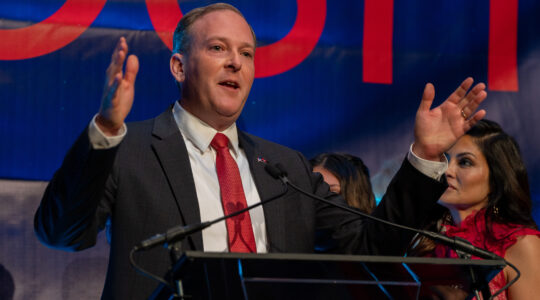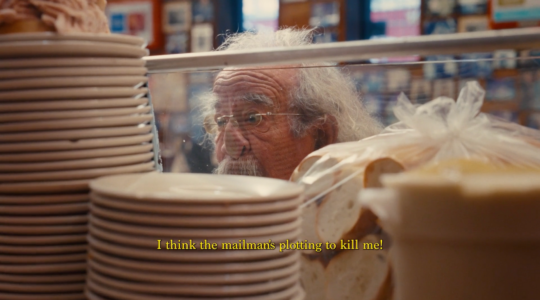Suddenly in Jewish Westchester, land of spacious homes and ample backyards, nothing seems to fit.
Westchesterís Jews, once limited by upper-crust restrictions, are experiencing a 40-percent population surge in the past 10 years, only to find that their infrastructure of schools and shuls now seems too small, tight around the seams.
Lawsuits are sprouting along with new neighbors. A synagogue in New Rochelle and a yeshiva in Mamaroneck are embroiled in legal fights with opponents of their growth, and zoning restrictions are forcing other synagogues to remodel rather than build anew.
Westchester Jews now number 129,000 in 55,000 households ó 13 percent of the countyís population ó and the fastest-growing Jewish community in the eight downstate counties, according to a new study. Blessings are evident in almost every
corner of the vast county, as synagogues are jammed, organizations are thriving and communal optimism is riding a crest.
Although UJA-Federationís newly released Jewish Community Study of New York has not yet announced the Jewish population of individual towns, Sheila Friedland, executive director of the Westchester Jewish Conference (an umbrella group of more than 100 synagogues and organizations), told The Jewish Week that almost no corner of the county has gone untouched.
ìThereís been major growth in Northern Westchester,î said Friedland, listing such towns as Bedford, Chappaqua, Croton, Mount Kisco, Armonk and Yorktown. ìYounger people are moving up-county where thereís more space, more housing.
ìJewish life in Central Westchester is very strong ó White Plains, Scarsdale, New Rochelle, Harrison. There may be a lessening in Southern Westchester, in Yonkers and Mount Vernon,î but there have been strong signs of revival in those communities, as well.
ìAt some level,î said Friedland, ìthis is our golden age.î
What spurred it all was a confluence of city Jews looking to buy and Westchester residents looking to sell. According to the 2000 U.S. Census, from 1995 to 2000 Westchester had a higher percentage of residents changing address than did the residents of Nassau, Suffolk, Rockland or New Jerseyís Bergen County. Westchesterís residential stability rate was even lower than for New York State as a whole. All that turnover translated into ìfor saleî signs.
Sharon Fogel, a lawyer who moved with her family from an apartment in Riverdale to a house in New Rochelle during this great migration, explained that many homes in New Rochelle were several hundred-thousand dollars cheaper than homes in Riverdale of comparable size.
Elliot Schwartz, a city resident who moved to Scarsdale in 2001, explained that anyone in the last decade who was looking to buy discovered that there simply were very few private homes in New York Cityís few solidly Jewish neighborhoods, let alone homes for sale at prices comparable to Westchesterís.
Houses have sprouted where once there were none. Marjorie Miller, whoís been living in Westchester since the 1950s, remembers that when she moved to Scarsdale ìthere was no street,î just a lane, and ìjust two houses. Now there are 10.î
The population boom is reflected in charity raised. Joel Blattstein, public relations director for the Westchester UJA-Federation, said the campaign there raised $14 million in 2002, up from $10 million five years ago.
Further, said Friedland, ìAmerican Jewish Committee is very active, and many women are involved in Hadassah. Thereís been a lot of grassroots activity, such as an Israeli vendors fair at the JCC in Pleasantville, and a synagogue in Bedford raised over $100,000 for victims of terror.
ìWestchester synagogue life is bursting and thriving,î said Friedland. ìSeveral synagogues have hundreds of children in their congregational schools. Many of our synagogues are expanding their physical plants.î
Miller, former president of the Westchester Reform Temple, said membership has ballooned to 1,100 families, up from 900 a decade ago.
ìWe have 736 children in the religious school,î a jump from 400 a decade ago, ìand there are already more than 100 bar/bat mitzvahs booked for next year,î she said.
But if the old restrictions against selling homes to Jews are a thing of the past, other restrictions still stand in the way of a growing Jewish infrastructure.
One New Rochelle lawyer said that over the last decade the Young Israel of New Rochelle, which has long outgrown its North Avenue building, has spent more than $1 million fighting community zoning and environmental-impact objections that have prevented the synagogue from building on a nearby property.
In Mamaroneck, the Westchester Day School also has been in court, protesting restrictions preventing the school from expanding on its 27-acre campus. The school shares the campus on Long Island Sound with the Westchester Hebrew High School.
Even those synagogues that havenít had to go to court have faced limitations.
Friedland recalled: ìWhen my synagogue, Temple Israel Center in White Plains, expanded, we had to first tear down some of what existed because [zoning required] that the floor plan on that existing piece of land could only be so big, and there must be a certain ratio of parking spaces to population.
ìThere are all kinds of zoning problems. I know a synagogue in Croton that has a proposal to purchase land in another area, but for the most part weíre seeing remodeling, not new sites.î
Jack Ukeles, the social policy planner who was the principal investigator of the population study, said county data will have to be evaluated to see whether Jewish services in Westchester have kept pace with the Jewish population.
ìIn a declining community, you wonder if the infrastructure is too big,î he said. ìWhen the growth is rapid, as in Westchester, you look to see if the infrastructure is too small. We wonít have the answers to that until we do the geographic analysis within the county.î
At first glance, said Ukeles, ìin the southern part of the county there is infrastructure; in the north, thereís less.î
Jewish day schools are ìa perfect exampleî of infrastructure lagging behind demographics, he said. Although Westchester now has more than twice as many Jews as the Bronx, the Bronx and Westchester have the same number of Jewish elementary schools: three.
For Westchester, a county of 129,000 Jews, there are only slightly more than 1,600 seats in Jewish day schools and high schools.
Additionally, all five Jewish schools ó Solomon Schechter day school and high school in White Plains and Hartsdale, and the Stein Yeshiva of Lincoln Park in Yonkers, along with the two schools in Mamaroneck ó are not easily reached from those communities up-county that Friedland said have grown the most.
The problem of schools becomes more acute as the population study shows that Westchester is the youngest Jewish suburb, with 26 percent under age 18.
Many Westchester children attend Jewish schools outside Westchester, with more than 300 enrolled in Riverdaleís SAR Academy.
Fogel, who moved from Riverdale, said while she was happy with Westchester, her location down-county reflected her need to be near New York City, not only for the commute to work but proximity to SAR. She said an added perk was that the City of New Rochelle, like many Westchester communities, provides free school bus transportation to schools within a 10-mile radius, making SAR much more of an option. Otherwise, most private buses charge about $2,500 per child for a school year.
With suburban Jewish neighborhoods being somewhat amorphous, synagogues have become important as local touchstones, a Jewish town square. In Westchester, synagogue affiliation has become more commonplace (51 percent) than even in Brooklyn (47 percent).
Rabbi Jacob Rubinstein, spiritual leader of the Young Israel of Scarsdale, recalled that 20 years ago the Young Israel had 150 families; now it has 400. Rabbi Rubinstein believes that ìScarsdale and New Rochelle are still in their metamorphoses of development as suburban communities.î
Rabbi Velvel Butman, the first significant chasidic presence in the county, came to Westchester nine years ago as the emissary of the Lubavitcher rebbe.
ìI was a Brooklyn chasid,î Butman joked. ìI knew more about Russia than about Westchester.î
But if he was a stranger then, he now has 13,000 names on his telephone list. ìWeíve just opened three new branches,î said Rabbi Butman, ìin Bedford, the Rivertowns [notably Dobbs Ferry, Irvington, Hastings] and Briarcliffe-Ossining.î
Where building new synagogues is difficult, there is improvisation. Rabbi Butman directs Shabbat services alternating between the SUNY Purchase performing arts center and rented space in the Rye Hilton, where he leads several hundred worshipers on the High Holy Days.
Improvisation is required by liberal synagogues. Miller, of the Westchester Reform Temple, said at least 500 non-members come for the High Holy Days, forcing two prayer shifts within the sanctuary, two more shifts outside under a tent and a free Rosh HaShanah service on the second day of the holiday when the temple once was empty.
It seems a county of answered prayers. n
The New York Jewish Week brings you the stories behind the headlines, keeping you connected to Jewish life in New York. Help sustain the reporting you trust by donating today.




